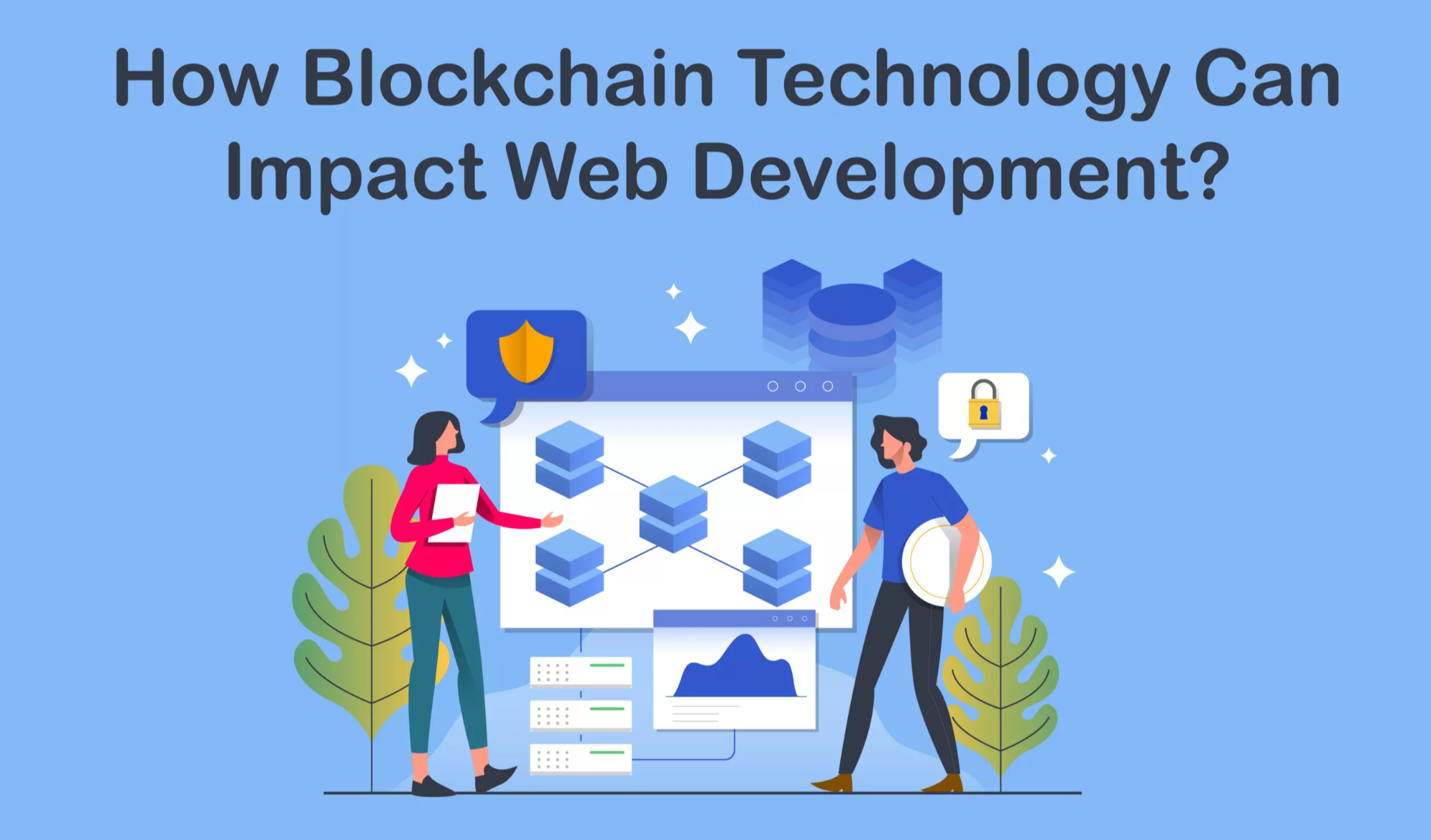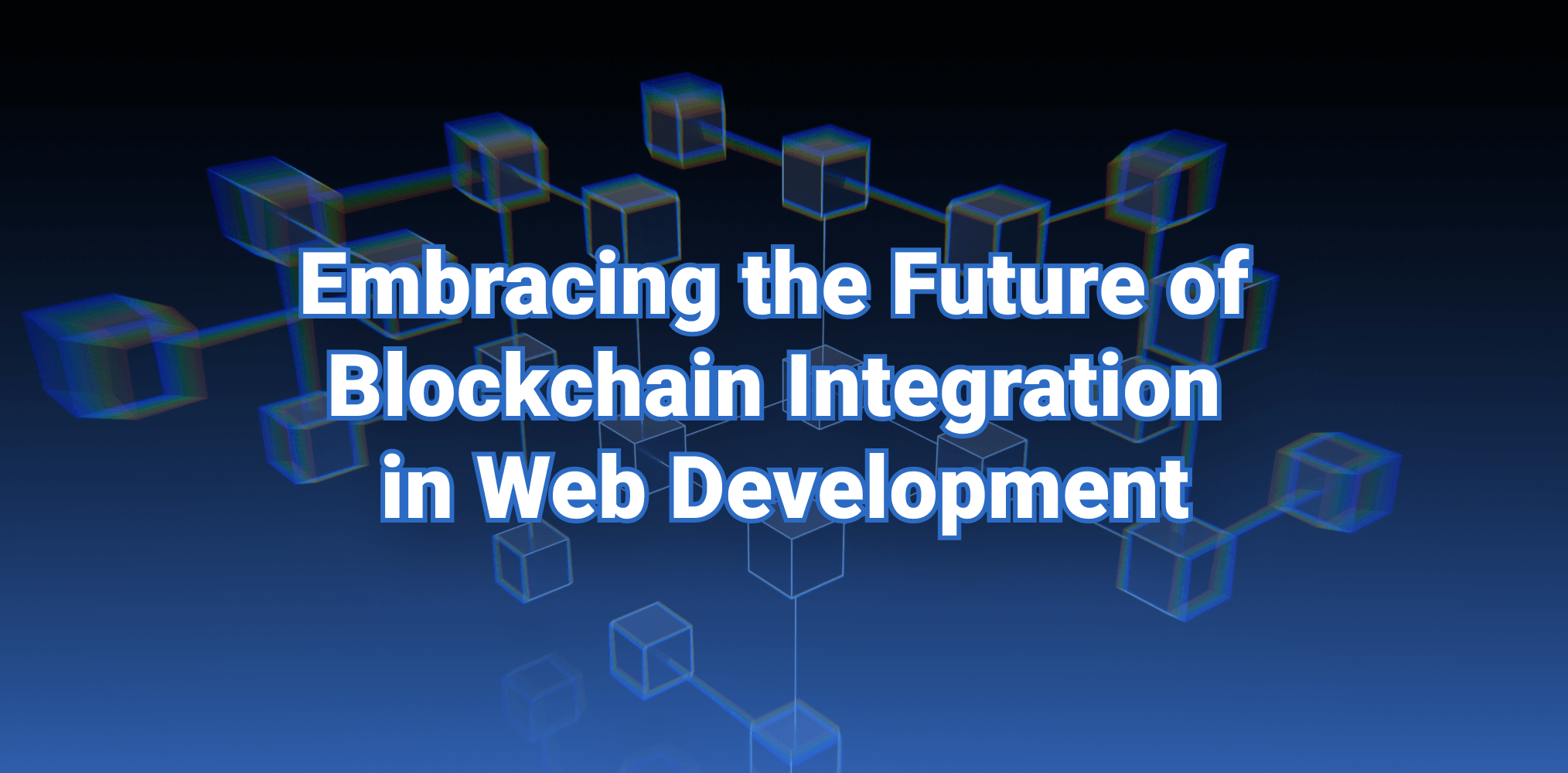Blockchain Technology in Web Development, In recent years, blockchain technology has emerged as a revolutionary force, transforming industries ranging from finance to healthcare. While blockchain is most commonly associated with cryptocurrencies like Bitcoin and Ethereum, its applications extend far beyond digital currencies. One area where blockchain is making a significant impact is web development.
As we move further into 2025, blockchain technology is becoming increasingly integrated into web development, offering new possibilities for security, transparency, and decentralization. In this article, we’ll explore the role of blockchain in web development, its key benefits, and how it’s shaping the future of the internet.
What is Blockchain Technology?
Blockchain is a decentralized, distributed ledger technology that records transactions across a network of computers. Each transaction is grouped into a block, which is linked to the previous block, forming a chain. This structure ensures that data is secure, transparent, and immutable.
Key features of blockchain include:
- Decentralization: No single entity controls the network.
- Transparency: All transactions are visible to participants.
- Immutability: Once recorded, data cannot be altered or deleted.
- Security: Cryptographic techniques ensure data integrity and authenticity.
How Blockchain is Transforming Web Development
1. Enhanced Security
One of the most significant benefits of blockchain in web development is enhanced security. Traditional websites rely on centralized servers, which are vulnerable to hacking and data breaches. Blockchain, on the other hand, uses decentralized networks and cryptographic techniques to secure data.
- Data Integrity: Blockchain ensures that data cannot be tampered with, making it ideal for applications that require high levels of security, such as financial transactions and identity verification.
- Decentralized Storage: Blockchain-based storage solutions, like IPFS (InterPlanetary File System), distribute data across multiple nodes, reducing the risk of data loss or corruption.
Example:
MyEtherWallet, a blockchain-based wallet, uses encryption and decentralized storage to protect users’ private keys and transactions.
2. Decentralized Applications (dApps)
Blockchain enables the development of decentralized applications (dApps), which run on a peer-to-peer network rather than a centralized server. dApps offer several advantages over traditional web applications:
- No Single Point of Failure: dApps are more resilient to outages and attacks.
- User Control: Users have full control over their data and transactions.
- Transparency: All transactions and operations are visible on the blockchain.
Example:
Uniswap, a decentralized exchange (DEX), allows users to trade cryptocurrencies without intermediaries, ensuring transparency and security.
3. Smart Contracts
Smart contracts are self-executing contracts with the terms of the agreement directly written into code. They automatically execute and enforce agreements when predefined conditions are met, eliminating the need for intermediaries.
- Automation: Smart contracts automate processes, reducing the risk of human error and increasing efficiency.
- Trustless Transactions: Parties can transact directly without needing to trust each other or a third party.
- Cost Savings: By eliminating intermediaries, smart contracts reduce transaction costs.
Example:
Ethereum is a popular platform for creating and deploying smart contracts, enabling a wide range of applications, from supply chain management to voting systems.
4. Tokenization
Blockchain enables tokenization, the process of converting assets into digital tokens that can be traded on a blockchain. This opens up new possibilities for web development, such as:
- Digital Assets: Tokens can represent ownership of physical assets, like real estate or art.
- Loyalty Programs: Businesses can create token-based loyalty programs to reward customers.
- Crowdfunding: Startups can raise funds by issuing tokens through Initial Coin Offerings (ICOs) or Security Token Offerings (STOs).
Example:
CryptoKitties, a blockchain-based game, allows users to buy, sell, and breed digital cats using Ethereum-based tokens.
5. Improved Transparency and Trust
Blockchain’s transparency and immutability make it an ideal solution for applications that require trust and accountability. For example:
- Supply Chain Management: Blockchain can track the movement of goods from origin to destination, ensuring transparency and reducing fraud.
- Voting Systems: Blockchain-based voting systems can ensure fair and transparent elections.
- Healthcare: Blockchain can securely store and share patient records, improving data accuracy and privacy.
Example:
IBM Food Trust uses blockchain to track the journey of food products, ensuring transparency and safety in the supply chain.
6. Micropayments and Monetization
Blockchain enables micropayments, allowing users to make small transactions with minimal fees. This opens up new monetization opportunities for web developers, such as:
- Pay-Per-Use Models: Users can pay for content or services on a per-use basis.
- Content Monetization: Creators can earn revenue directly from their audience without intermediaries.
- Decentralized Marketplaces: Blockchain-based marketplaces enable peer-to-peer transactions with low fees.
Example:
Brave Browser uses blockchain to reward users with Basic Attention Tokens (BAT) for viewing ads, creating a new model for online advertising.
Challenges of Integrating Blockchain into Web Development
While blockchain offers numerous benefits, it also comes with challenges, such as:
- Scalability: Blockchain networks can become slow and expensive as they grow.
- Complexity: Developing blockchain-based applications requires specialized knowledge and skills.
- Regulation: The regulatory environment for blockchain is still evolving, creating uncertainty for developers and businesses.
How to Get Started with Blockchain in Web Development
1. Learn the Basics
Start by learning the fundamentals of blockchain technology, including how it works, its key features, and its applications. Resources like Coursera and Udemy offer courses on blockchain development.
2. Choose a Platform
Select a blockchain platform that suits your needs. Popular options include:
- Ethereum: A versatile platform for creating smart contracts and dApps.
- Hyperledger: An open-source framework for enterprise blockchain solutions.
- Binance Smart Chain: A blockchain platform optimized for decentralized finance (DeFi) applications.
3. Develop and Test
Work with your development team to build and test your blockchain-based application. Key steps include:
- Designing Smart Contracts: Define the logic and rules for your smart contracts.
- Building the Front-End: Create a user-friendly interface for your application.
- Testing: Thoroughly test your application to ensure it works as expected.
4. Launch and Monitor
Once your application is ready, launch it and monitor its performance. Use analytics tools to track key metrics like user engagement, transaction volume, and network performance Blockchain Technology in Web Development.

Real-World Examples of Blockchain in Web Development
1. OpenSea
OpenSea is a decentralized marketplace for buying, selling, and trading digital assets like NFTs (non-fungible tokens). It uses blockchain to ensure transparency and security in transactions.
2. Steemit
Steemit is a blockchain-based social media platform that rewards users with cryptocurrency for creating and curating content. It uses blockchain to ensure transparency and fairness in content monetization.
3. Augur
Augur is a decentralized prediction market platform that uses blockchain to enable users to create and trade prediction markets. It ensures transparency and trust in the prediction process.
Conclusion
Blockchain technology is revolutionizing web development by offering new possibilities for security, transparency, and decentralization. From enhanced security and smart contracts to tokenization and micropayments, blockchain is transforming how websites and applications are built and used.
As we move further into 2025, the integration of blockchain into web development is expected to grow, creating new opportunities for businesses and developers. By embracing blockchain technology, you can stay ahead of the curve, build innovative applications, and deliver exceptional user experiences.
Read More: The Role of Artificial Intelligence in Modern Web Development
High-Authority External Links:
- Ethereum Developer Documentation – A comprehensive resource for building blockchain-based applications on Ethereum.
- IBM Blockchain Essentials – A guide to understanding and implementing blockchain technology.




